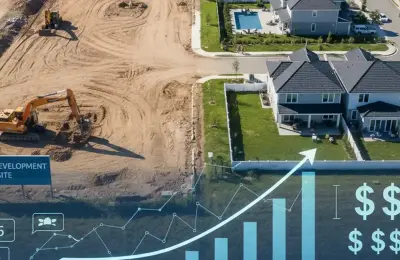
Property Investment Opportunities: Sydney and Melbourne — Cities of Limitless Potential

Introduction: The Australian Property Market as a Global Magnet
The Australian real estate market is traditionally considered one of the most reliable globally, attracting both domestic and international investors. At the heart of this attention stand two giants: Sydney (New South Wales) and Melbourne (Victoria). Both cities offer unique investment opportunities but have significant differences in market dynamics, growth factors, and potential profitability.
This article will help you understand the specifics of each market and determine where your investment in Australian real estate will achieve the greatest success.
SEO Keywords: property investment Sydney, property investment Melbourne, Australia real estate market, property yield.
🏙️ Sydney: Premium Market and High Capital Growth
Sydney is the financial and technological hub of Australia. Its property market is characterized by high entry costs but also significant potential for capital growth.
Factors Driving Growth in Sydney:
Land Constraints: Sydney's geography (surrounded by the ocean and national parks) limits expansion, consistently supporting high demand.
Infrastructure Projects: Major investments in transport infrastructure (e.g., Sydney Metro projects) make more distant areas accessible, creating new hotspots for property investment.
High-Income Sectors: The concentration of headquarters of major financial and technological companies ensures a constant influx of highly skilled and affluent residents.
Hotspots for Investment in Sydney:
Inner West: Consistent demand due to proximity to the CBD and convenient transport links.
New Transport Corridors: Areas near new metro stations and modernized rail lines.
🎓 Melbourne: Rapid Population Growth and Rental Yield
Melbourne, known as the cultural and educational capital of Australia, attracts investors with its demographic dynamics and, typically, a higher rental yield compared to Sydney.
Factors Driving Growth in Melbourne:
Strong Migration: Melbourne is one of the fastest-growing major cities in the Western world. The continuous influx of students and immigrants creates high demand for rental housing.
Developed Education Sector: The presence of prestigious universities guarantees stable demand for housing in central and surrounding areas.
Expansion Opportunities: Unlike Sydney, Melbourne has more space for expansion to the west and north, making market entry in suburban areas more accessible.
Hotspots for Investment in Melbourne:
Inner Suburbs: Areas that offer high rental yield, especially for apartments.
Growth Corridors: Suburbs in the west and north (e.g., Wyndham, Melton), where new infrastructure projects stimulate rapid construction and price growth.
📊 Sydney vs. Melbourne: Comparative Analysis for Investors
The choice between the two cities depends on your investment goals:
| Criterion | Sydney | Melbourne |
|---|---|---|
| Main Goal | Maximum Capital Growth | Balance between Growth and Yield |
| Entry Cost | High (Higher Entry Price) | Medium/High (More Accessible) |
| Rental Yield | Medium/Low | Higher (Higher Yield Rate) |
| Main Risk | Sensitivity to interest rate hikes | Oversupply of apartments in the CBD |
Conclusion: If you are ready to invest a significant amount for maximum long-term capital appreciation, choose Sydney. If your priority is stable cash flow and high rental yield, focus on Melbourne.
💡 Key Property Investment Strategies
Regardless of the chosen city, success in Australian real estate requires a strategic approach:
Invest in Infrastructure: Always buy near planned or current major transport, healthcare, or educational projects.
Demographic Analysis: Pay attention to areas with high rental demand among key groups: students, young professionals, and relocating families.
Avoid "Over-Development": In Melbourne, be cautious about investing in large apartment complexes in the city centre where oversupply is possible. In Sydney, focus on quality and uniqueness of the offer.
Professional Consultation: Seek advice from a local financial and tax consultant specializing in property investment to optimize your deal structure.
Conclusion
Both Sydney and Melbourne remain cornerstones of the Australian real estate market, offering investors stability and growth potential. A smart property choice and a clear understanding of local dynamics are key to turning ambition into real profit.
News insight
 Nov 18, 2025
Nov 18, 2025
Property Developer Earnings in the US Market: A Comprehensive Overview
Explore how US property developers earn money. Learn about profit margins (Residential vs. Commercia...
 Nov 18, 2025
Nov 18, 2025
What Is a Build-to-Rent (BTR) Development?
Discover what a Build-to-Rent (BTR) development is. Learn about this growing real estate model, its...
 Nov 17, 2025
Nov 17, 2025
Build-to-Rent: Transforming America's Housing Landscape
Explore how the Build-to-Rent (BTR) model is transforming the US housing market. Learn why instituti...
